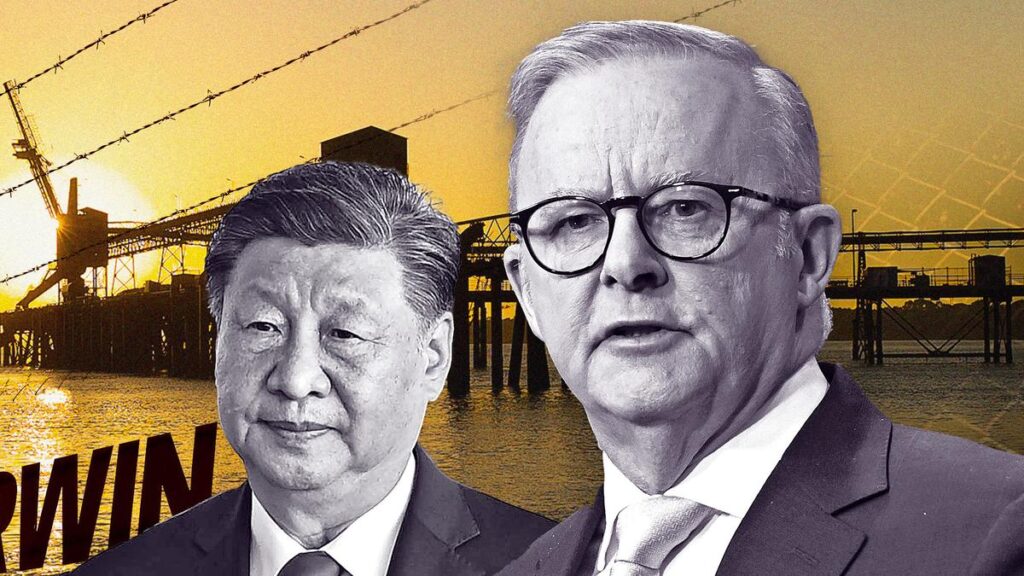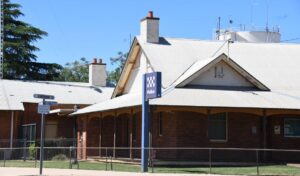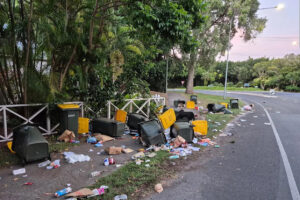
Prime Minister Anthony Albanese began his six-day official visit to China on Sunday, focusing on promoting Australian tourism while preparing for challenging discussions regarding China’s military expansion and regional ambitions. The trip commenced in Shanghai, where Albanese aimed to attract more Chinese visitors to Australia, highlighting the country’s unique landmarks to support its economy.
The backdrop of Shanghai’s skyline served as a fitting setting for Albanese’s message. He was accompanied by Tourism Australia mascot “Ruby the Kangaroo” during events aimed at enhancing tourism ties. As he engaged with Chinese tourism groups, the Prime Minister’s agenda included addressing the growing military presence of China, particularly in the context of the ongoing biannual Talisman Sabre war games being monitored by Chinese spy vessels off the coasts of Queensland and the Northern Territory.
In advance of Albanese’s trip, Foreign Minister Penny Wong laid the groundwork for necessary but difficult dialogues, particularly concerning strategic tensions in the region. During a meeting with Chinese counterpart Wang Yi at the ASEAN summit in Malaysia, Wong expressed serious Australian security concerns regarding China’s actions in the South China Sea, the stability of the Taiwan Strait, and ongoing human rights violations in regions such as Hong Kong, Tibet, and Xinjiang.
Wong’s remarks also touched on the controversial Chinese naval flotilla’s navigation around Australia and recent live-fire exercises conducted without adequate notice. The stark exchange between Wong and Wang underscored the diplomatic balancing act that Albanese must perform throughout his visit, as he seeks to address security issues while promoting economic collaboration.
Strengthening Economic Ties
Albanese’s itinerary includes visits to Beijing and Chengdu, focusing on enhancing economic, tourism, and trade relations. This trip comes at a critical juncture, as China remains Australia’s largest trading partner while simultaneously being a significant strategic rival to Australia’s key ally, the United States. The Prime Minister faces the challenge of leveraging economic opportunities from China without compromising Australia’s defense commitments, particularly amid concerns related to the AUKUS nuclear submarine program and rising defense spending demands from Washington.
Direct discussions with President Xi Jinping and Premier Li Qiang later this week are expected to cover these sensitive topics. Albanese has committed to engaging in “honest conversations” about the existing disagreements, despite the overall focus on fostering goodwill and economic prospects.
In Shanghai, Albanese is set to oversee the signing of a new cooperation agreement between Trip.com, a leading online travel agency, and Tourism Australia. This initiative aims to bolster the number of Chinese tourists visiting Australia, which is essential for the Australian economy.
“Expanding our tourism relationship with China will mean more jobs for Australians and a boost to Australian businesses,” Albanese stated, emphasizing the quality of Australian exports such as beef, barley, red wine, and lobster.
Statistics reveal that China is Australia’s largest market by spending and the second-largest source of inbound tourists after New Zealand. In the year leading up to March 2025, approximately 860,000 trips were made to Australia from mainland China, resulting in a total expenditure of $9.2 billion. This accounted for roughly a quarter of all short-term international visitor spending in Australia during that timeframe.
Business Collaboration and Future Opportunities
Tourism between Australia and China has been on an upward trajectory, with a reported 26 percent increase in visitors and a 28 percent rise in spending from March 2024 to March 2025. For Australians, China ranks as a top-five visitor market across all states and territories, except the Northern Territory, and is the leading international visitor source for New South Wales, Victoria, and the Australian Capital Territory.
Accompanying Albanese on this trip is a high-level delegation of prominent executives from top Australian companies and universities. They are scheduled to participate in a roundtable discussion hosted by the Business Council of Australia and the China Development Bank to explore recommendations for strengthening investment ties.
Notable figures, including Andrew Forrest of Fortescue, Geraldine Slattery of BHP, and Kellie Parker of Rio Tinto, are expected to focus discussions on collaboration in green technology, research and development, and clean energy initiatives.
As Rio Tinto’s Kellie Parker noted, “We are working closely with Chinese customers to support the development of low-carbon steelmaking technologies, leveraging Australia’s high-quality iron ore and China’s manufacturing expertise to drive real progress on emissions reduction.”
The SunRice Group also expressed optimism about the potential of the Chinese market. CEO Paul Serra highlighted that China’s evolving consumer preferences present long-term opportunities for trusted food producers like SunRice.
Albanese’s visit aims to navigate the complexities of international diplomacy while underscoring the growth potential in tourism and trade relations with China, positioning Australia for a prosperous future amidst evolving global dynamics.







